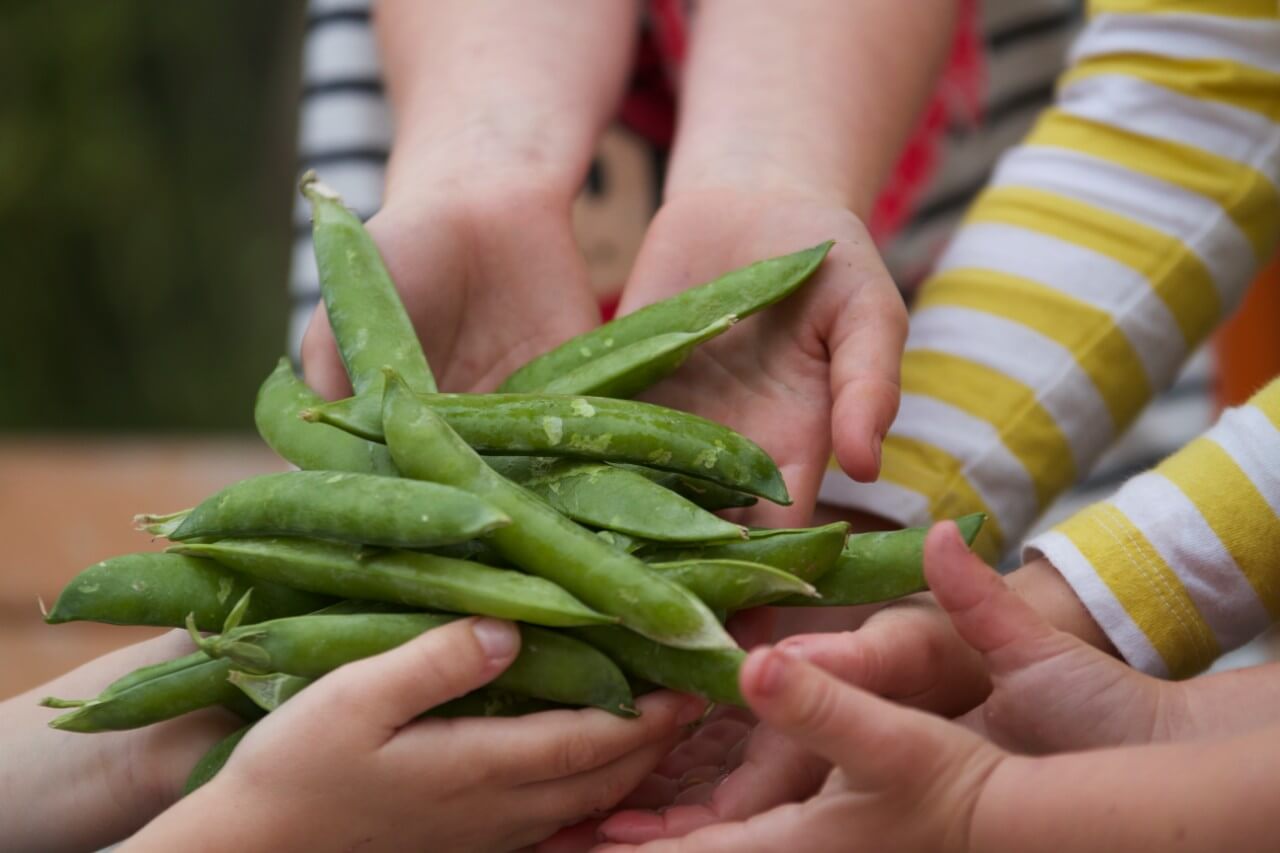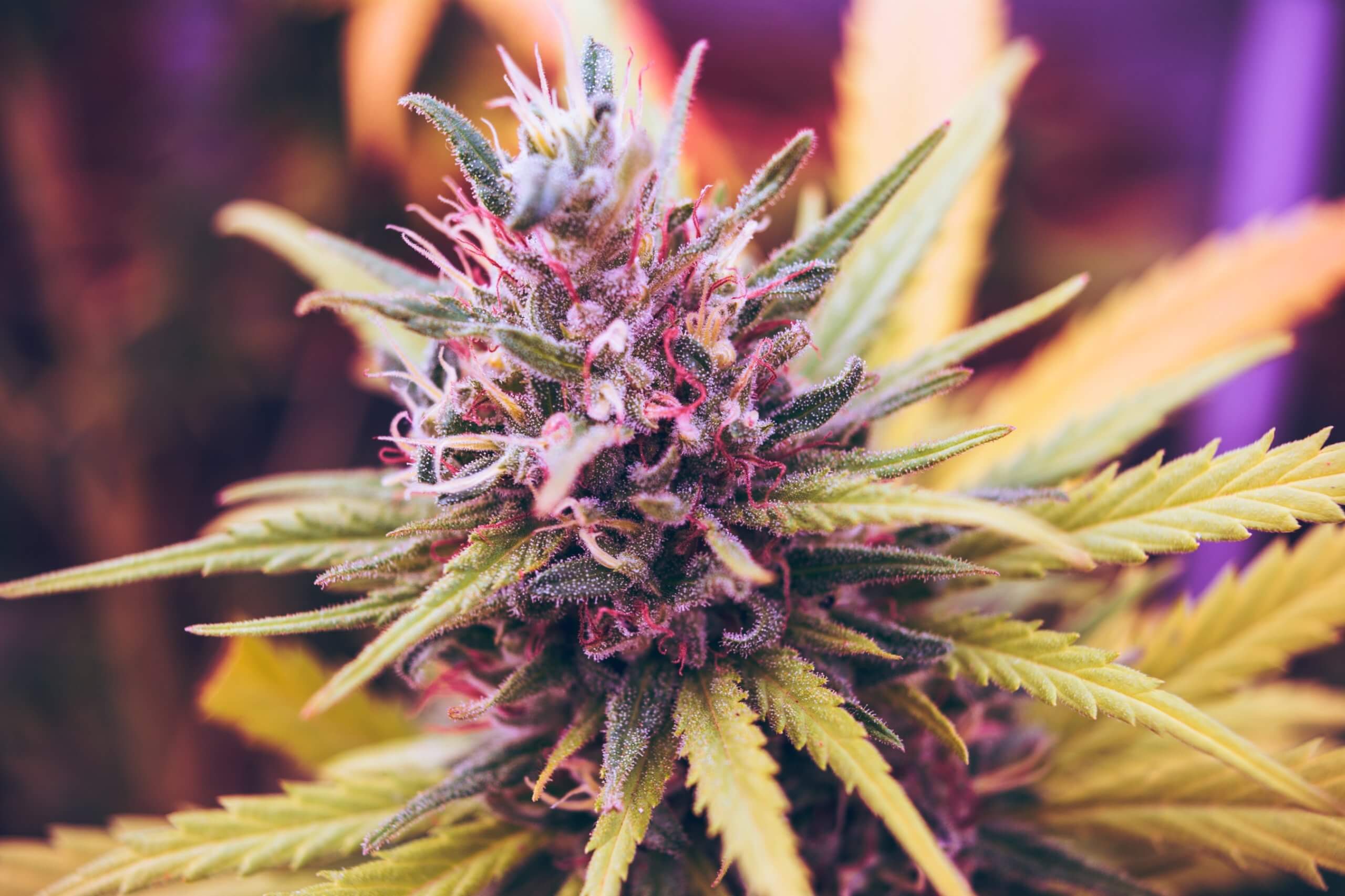With a goal of connecting more students across the country to indoor gardening opportunities,
The Scotts Miracle Grow Foundation Hawthorne Gardening Company and National Farm to School Network have launched a pilot project to integrate hydroponic growing systems into classrooms and science curricula this school year.
Halfway into the pilot year the hydroponic gardens are overflowing and teachers, students and families are seeing the positive impacts in and outside of the classroom. Students are demonstrating an increased interest in science, technology, math and engineering (STEM) concepts, as well as an increase in applying critical thinking skills. The hydroponic systems have also enhanced family and community engagement and fostered student behavioral and social-emotional development.
Across all pilot schools, the hydroponic systems are encouraging students from pre-school to middle school to take ownership over the garden, deciding what to grow, monitoring the system daily, and leading care and harvest. According to teachers, student ownership of the hydroponic units has translated into improved attitudes, knowledge, and behaviors related to healthy eating, improved their knowledge about gardening, agriculture and food systems and provided valuable opportunities for peer learning.
The hydroponic systems have also enhanced family and community engagement and fostered student behavioral and social-emotional development.
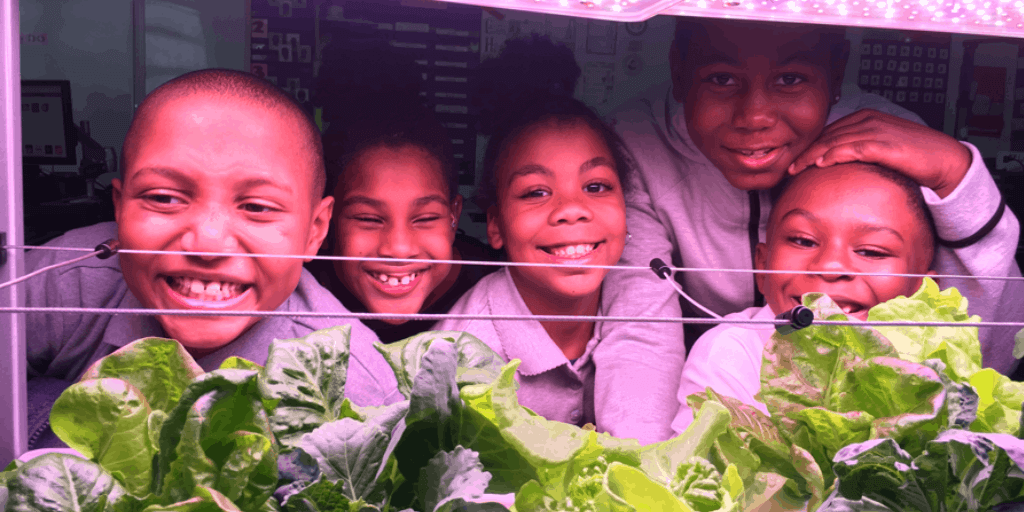
Most classrooms are using their pepper, tomato, herb and salad green harvests in taste tests while teachers are incorporating plant parts, hydroponic vs. soil garden needs and life cycle lessons into existing STEM, food system, and/or nutrition curricula. At Kimball Elementary School in Washington, D.C., students in a FoodPrints classroom and lab incorporate their hydroponic produce into meals and snacks they prepare as a part of their cooking and gardening STEM curriculum. Recently, students used their hydroponically grown tomatoes to create a salsa for sweet potato quesadillas. “Our special education class has taken ownership of the hydroponic grow station. They put it together, take care of it and monitor the growth. It’s been a great experience for them,” describes Kimball Elementary School.
At P.S. 214 in the Bronx, New York sixth grade students had the opportunity to teach second grade students about the hydroponic garden. The sixth graders did a shared reading about plants as a system, and then created hydroponic bags to observe the growth of a lima bean.
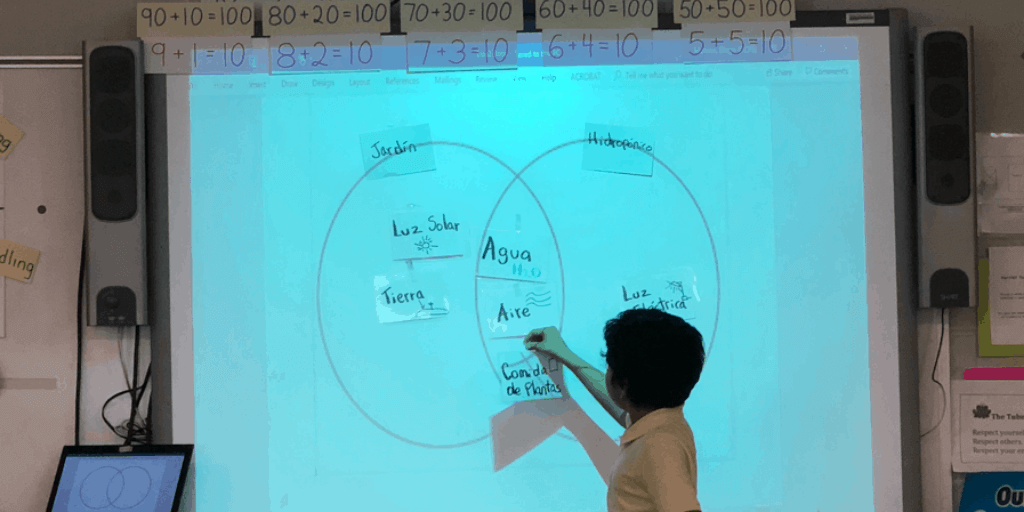
One of the things that makes the hydroponic systems such a great learning and teaching tool for plant life cycles and other STEM concepts is that they provide relatively instant results for both students and teachers. “Students can see the plants from seed to plant in record time. Seeds produce plants produces tomatoes. They know that but to see it without waiting months is amazing. They run to the grow station every time they enter the classroom,” describes Kimball Elementary School.
And students’ general inquiry and interest in scientific process is increasing. “I have heard very fascinating ‘what if’ questions from my students like ‘what if we can grow a whole farm of vegetables just like this?’ which has led me to incidental exploration of other science avenue topics such as sustainability, pros vs. cons, and water as a resource,” reports Amidon-Brown Elementary School in Washington, D.C.
At Kimball Elementary, students counted the yellow flowers on their tomato plants in anticipation of the plant’s fruits. “They are very excited to see if we can produce as many tomatoes as predicted,” describes a Kimball Elementary teacher.
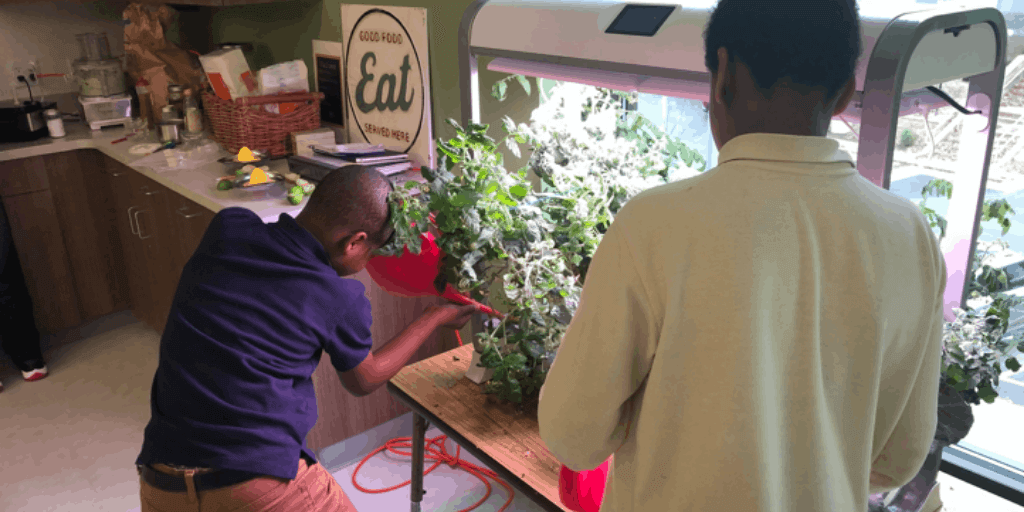
Many of the schools have had success engaging families and community with the hydroponic systems. Some schools have included families in the harvesting and tasting of the hydroponic plants while others have placed the unit in a shared space where the whole school community can observe, ask questions, and share in the excitement with the students. “We teach a family cooking class on Monday afternoons. Parents who might not have ever seen a garden or be interested in growing plants ask so many questions about the hydroponic system. It sparks conversations about the plants we are growing, healthy eating and how to cook those plants in a non-threatening informative way,” describes Kimball Elementary School.
Teachers have noticed marked changes in their students such as increased overall awareness and attentiveness to academic responsibilities as well as demonstration of social-emotional development. NFSN staff observed a young student at Tubman Elementary School in Washington, D.C. who had been struggling to concentrate in the classroom become much more engaged when the class visited the hydroponics unit, eagerly asking and answering questions. At Sunrise Middle School in San Jose, California, students have started managing the hydroponic care schedule and consistently remind their teacher who is on deck to be the weekly garden helpers.
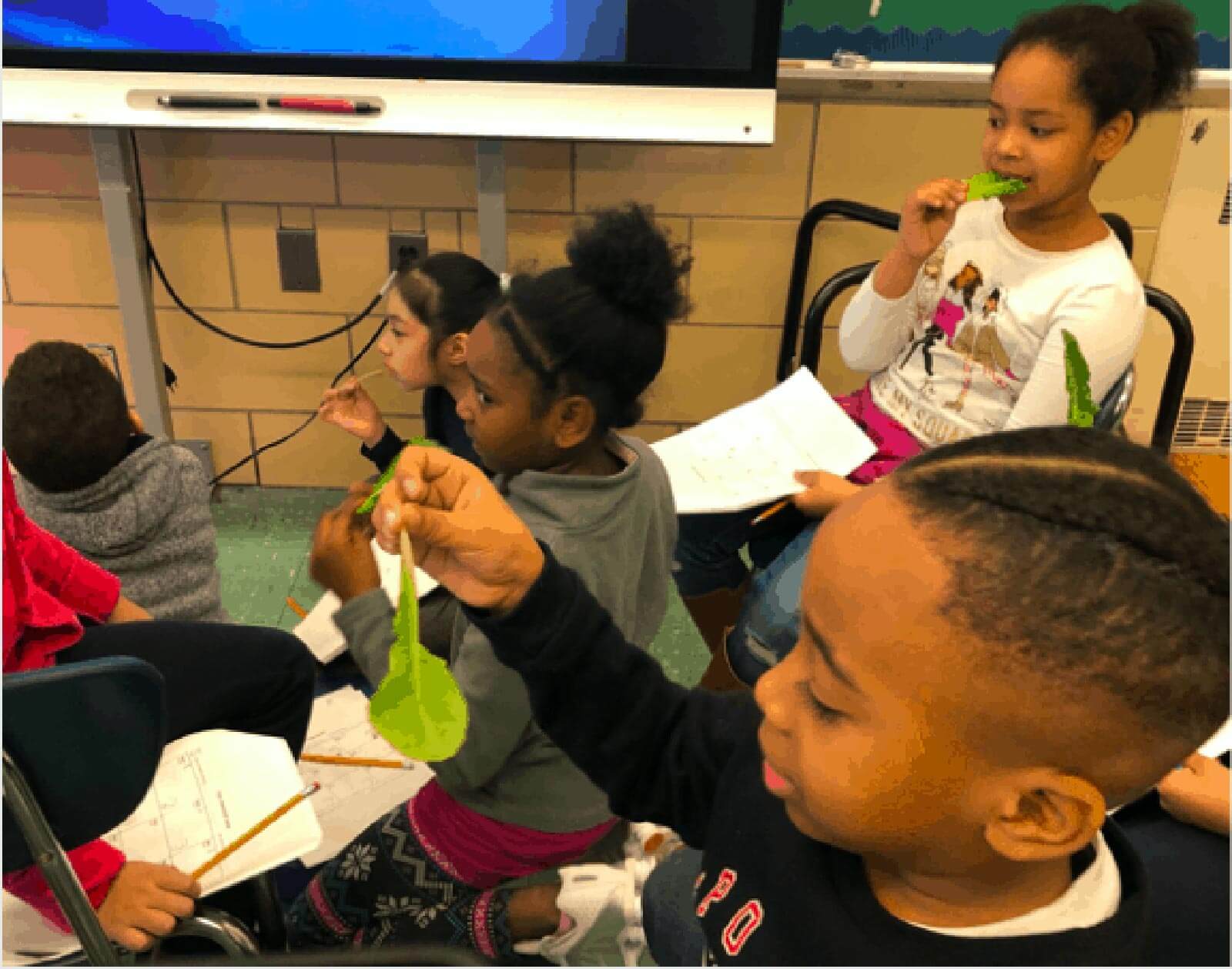
Once spring arrives, many classes have hopes to transplant their tomatoes and peppers to outdoor gardens while others are planning to plant a new round of hydroponic pods at the same time they plant seeds, creating additional opportunities to explore STEM concepts, to encourage family and community engagement and support continued social-emotional development.
Teachers anticipate the positive impacts to grow as they continue to integrate the hydroponics systems into lessons and families become more engaged in the delicious results.
Learn more about how we’re connecting kids to the benefits of gardening.

